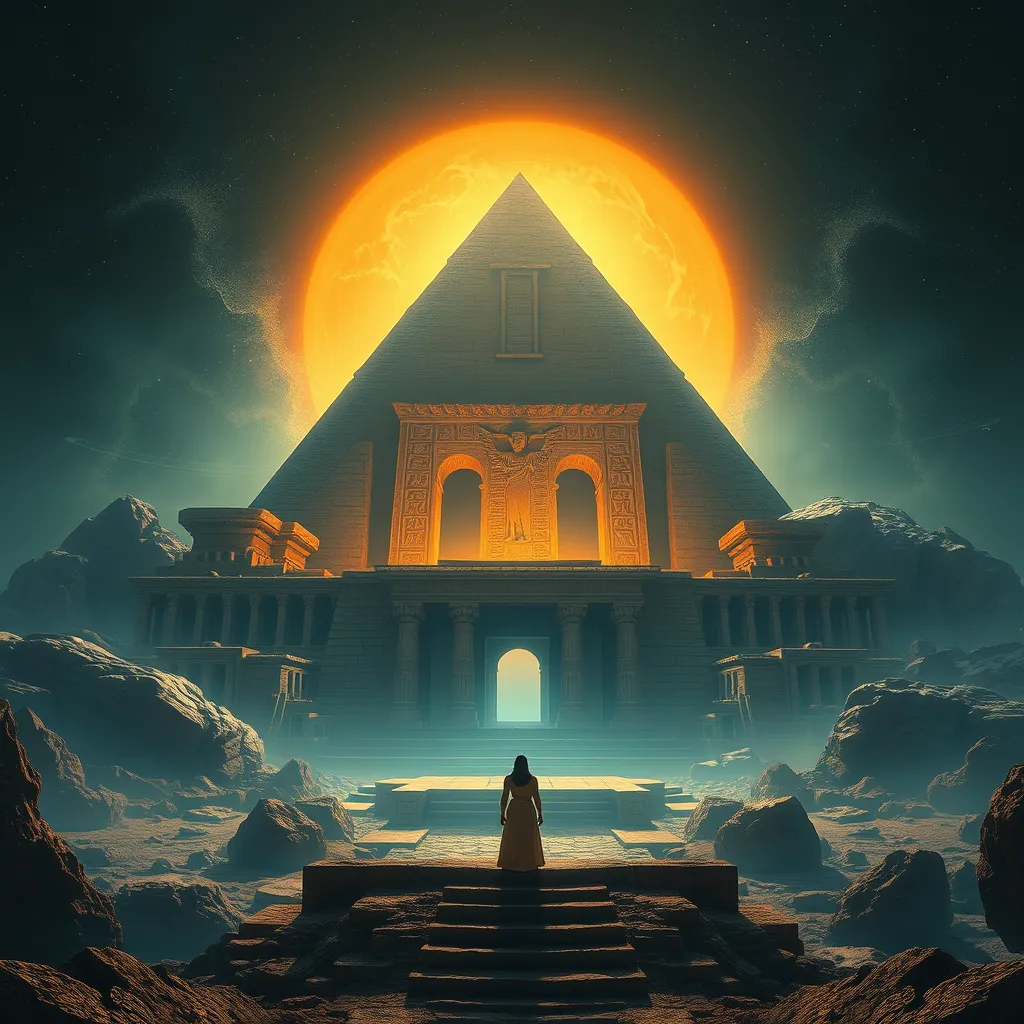The Duat: A Realm of Judgment and Reckoning
I. Introduction to the Duat
The Duat, in Ancient Egyptian mythology, is a complex and multifaceted realm that embodies the afterlife. It is not merely a place but a significant concept that represents the journey of the soul after death. The Duat is often described as a mysterious underworld that serves as the stage for the judgment of the deceased, where their deeds in life are evaluated by divine beings.
In the context of Ancient Egyptian beliefs, the Duat plays a crucial role in the afterlife narrative. It is here that the souls of the departed must navigate various trials and confront powerful deities to determine their fate. The Duat is both a place of terror and hope, reflecting the duality of life and death in Egyptian thought.
II. The Geography of the Duat
The Duat is depicted as a vast and intricate landscape composed of various regions, each with its own unique characteristics and symbolic meanings. It is often represented in ancient texts as a labyrinth of darkness filled with rivers, fields, and obstacles.
- The Waters of Chaos: A primordial ocean that surrounds the Duat, symbolizing the chaos and uncertainty of the afterlife.
- The Hall of Osiris: The central area where the judgment of souls takes place, overseen by Osiris, the god of the afterlife.
- The Field of Reeds: A paradise for the virtuous, resembling the Nile Delta, where the worthy could enjoy eternal peace.
Each of these regions within the Duat carries deep symbolic meanings, representing the struggles and triumphs of the human soul in its quest for immortality.
III. The Deities of the Duat
Within the Duat, numerous deities play pivotal roles in guiding souls through the afterlife journey and administering judgment. Key figures include:
- Osiris: The god of the afterlife, responsible for judging the souls of the deceased.
- Anubis: The jackal-headed god who oversees the mummification process and guides souls to the Hall of Osiris.
- Ma’at: The goddess of truth and justice, whose feather is used in the weighing of the heart ceremony.
These deities not only symbolize different aspects of the afterlife but also reflect the values and beliefs of Ancient Egyptian society regarding morality, justice, and the cycle of life and death.
IV. The Journey Through the Duat
The journey through the Duat is depicted as a perilous path that every soul must navigate after death. This journey is fraught with challenges, including encounters with mythical creatures and trials that test the soul’s worthiness.
Some of the major trials faced during this journey include:
- Confrontations with Serpents: Souls must overcome fearsome serpents that guard the pathways of the Duat.
- Crossing the Lake of Fire: A daunting task that symbolizes purification through suffering.
- Facing the Judgment of Osiris: The ultimate trial, where souls confront their deeds in life.
It is through these trials that the soul’s character is tested, allowing the deities to make an informed judgment about its fate.
V. The Weighing of the Heart Ceremony
The Weighing of the Heart ceremony is perhaps the most significant event within the Duat. In this ritual, the heart of the deceased is weighed against the feather of Ma’at, which symbolizes truth and justice.
The ceremony proceeds as follows:
- The deceased is brought before Osiris and the assembled deities.
- Anubis weighs the heart on a scale, ensuring that it balances with the feather.
- If the heart is lighter than the feather, the soul is deemed worthy and can enter the Field of Reeds.
- If the heart is heavier, it is devoured by Ammit, a fearsome creature, leading to eternal oblivion.
This ceremony embodies the fundamental beliefs of Ancient Egyptians regarding morality and the consequences of one’s actions in life.
VI. Consequences of Judgment
The outcomes of the Weighing of the Heart ceremony determine the fate of the soul:
- Worthy Souls: Those who pass the judgment are granted access to the Field of Reeds, a paradise where they can enjoy eternal bliss.
- Unworthy Souls: Souls that fail the judgment face dire consequences, often resulting in annihilation or eternal torment.
These outcomes reflect the moral framework of Ancient Egyptian society, emphasizing the importance of living a virtuous life.
VII. Cultural Representations of the Duat
The Duat has been richly depicted in ancient texts, inscriptions, and tomb art. These representations offer insight into how the Egyptians viewed the afterlife and their beliefs about judgment.
- The Book of the Dead: A collection of spells and texts that guide souls through the Duat, providing instructions for the afterlife journey.
- Tomb Paintings: Artwork that illustrates scenes from the Duat, including the weighing of the heart and the various trials souls must face.
These cultural representations not only highlight the significance of the Duat in Ancient Egyptian belief systems but also influence modern interpretations of the afterlife and mortality.
VIII. Conclusion
The Duat remains a powerful symbol in Egyptian culture, representing the complexities of life, death, and the moral choices that define humanity. Its legacy continues to resonate today, reminding us of the universal themes of judgment and the quest for meaning beyond mortal existence.
As we reflect on the significance of the Duat, we are prompted to consider our own lives and the values we uphold, understanding that the concept of judgment transcends cultures and time, ultimately shaping our collective human experience.




